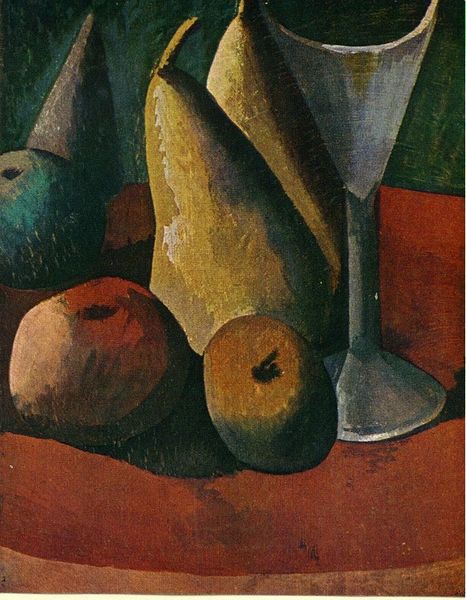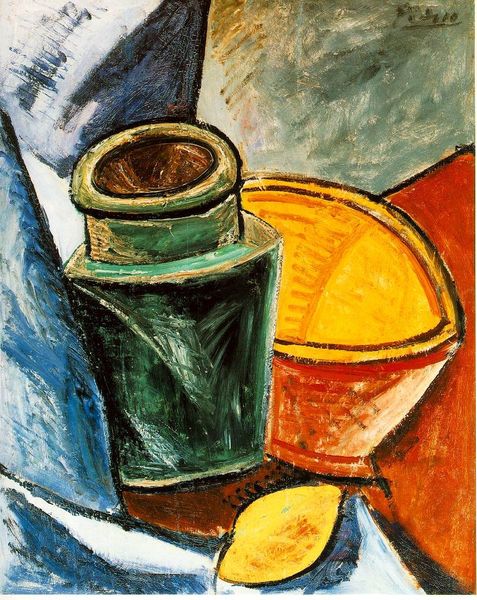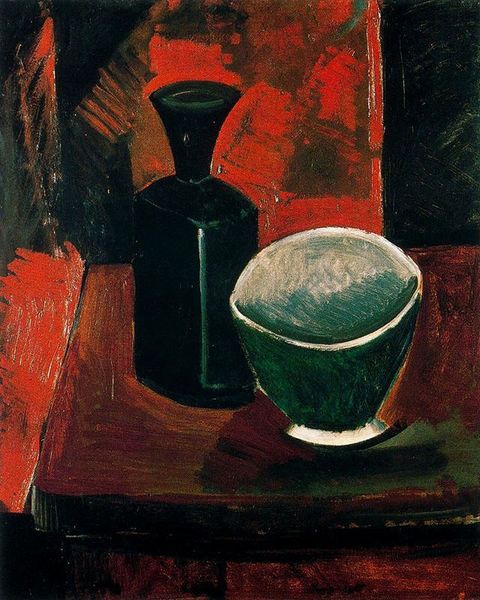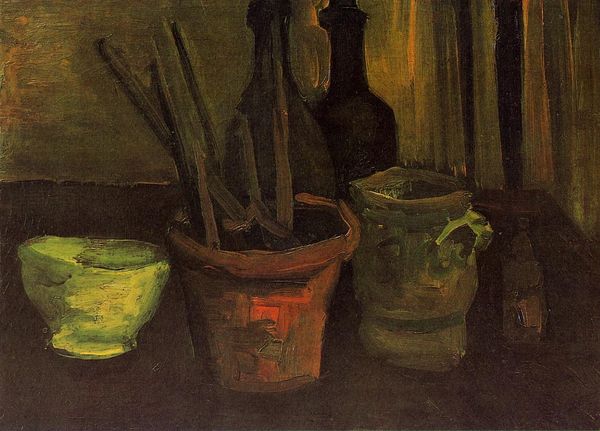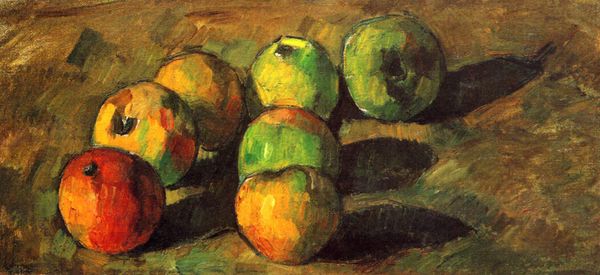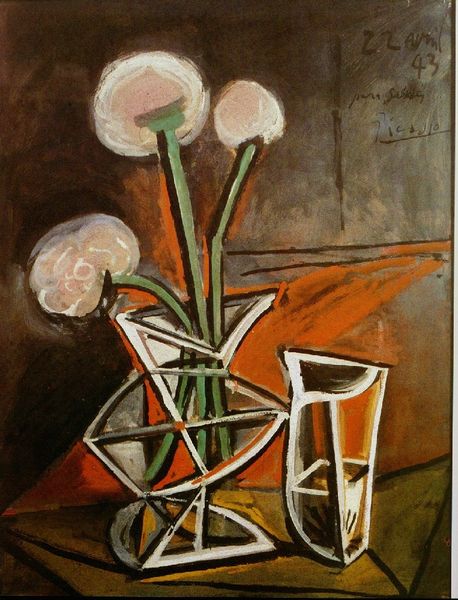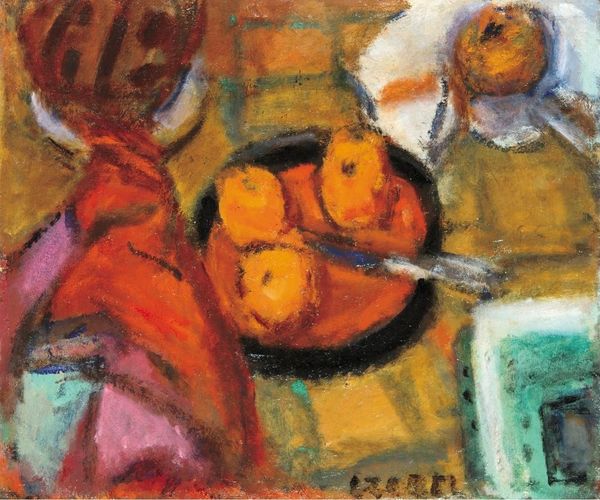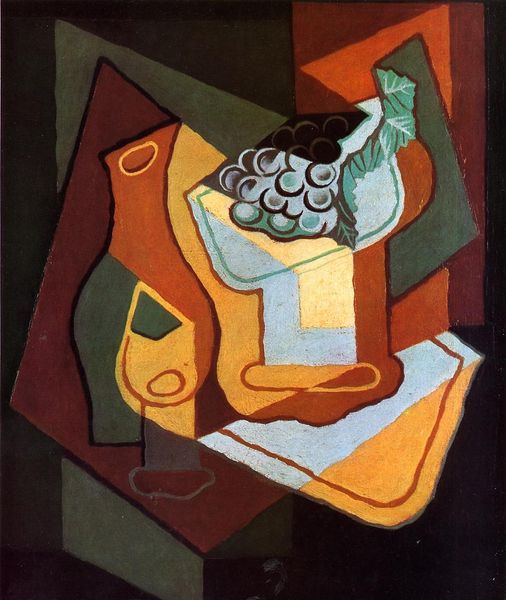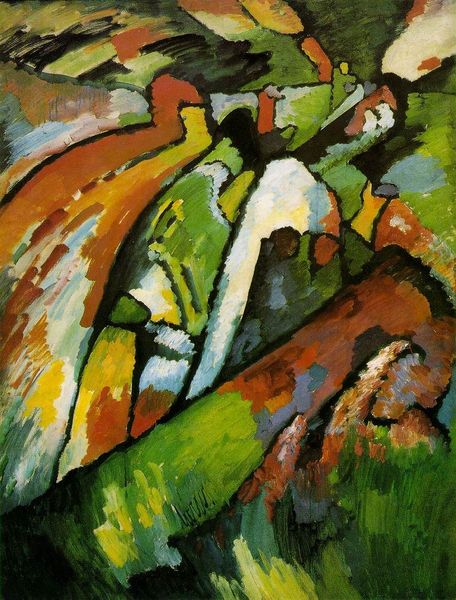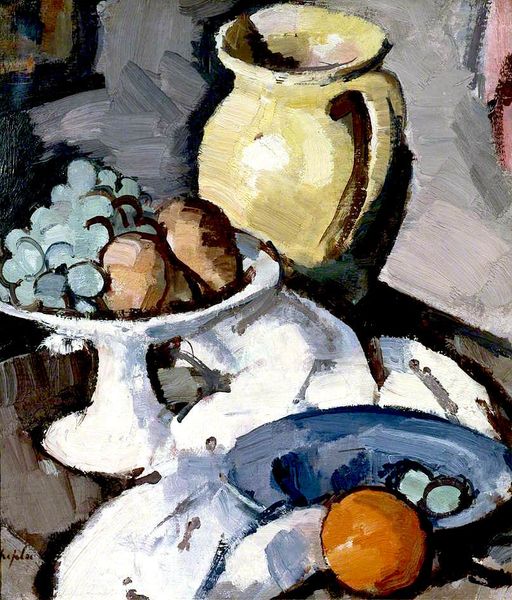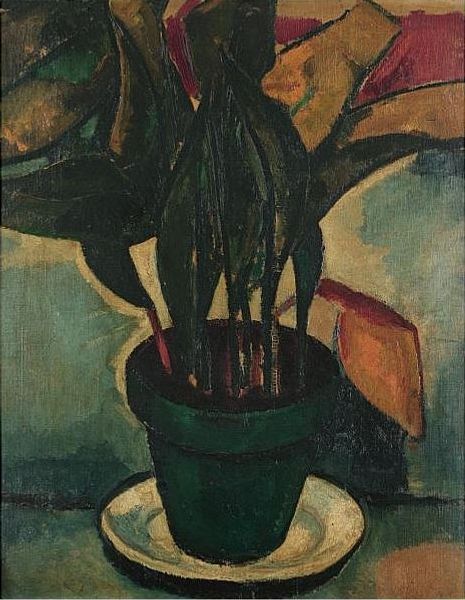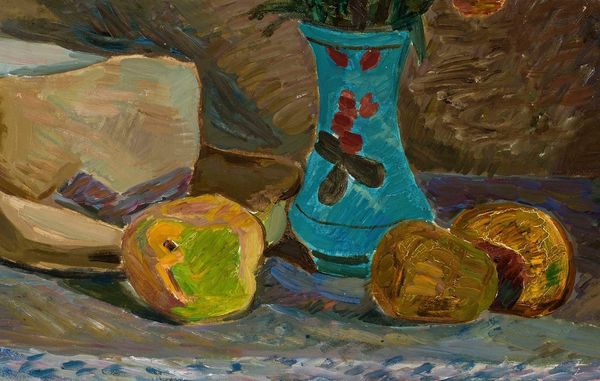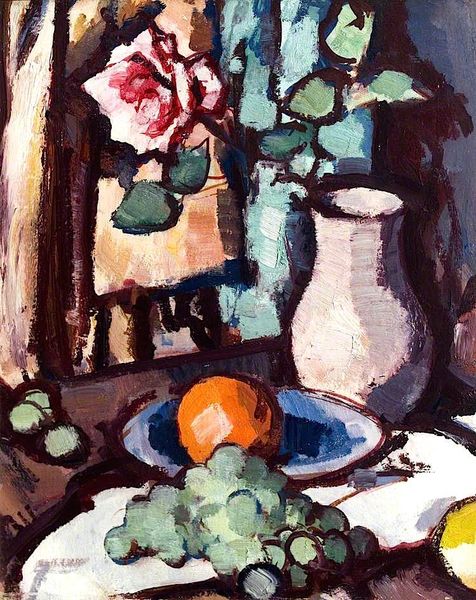
painting, oil-paint
#
still-life
#
cubism
#
painting
#
oil-paint
#
oil painting
#
modernism
Copyright: Public domain US
Curator: Here we have Pablo Picasso's "Still Life," painted in 1908, a powerful example of his early cubist explorations using oil on canvas. Editor: My first impression? Brooding. Almost claustrophobic with its murky greens and yellows, a heavy stillness that feels more like a stage set than a celebration of simple objects. I wonder how the paint was worked to acheive that thickness, especially where we see light. Curator: Exactly! It's far from a photorealistic rendering. Notice how Picasso flattens the perspective, reducing forms to geometric suggestions of themselves. It’s as if he's breaking down the very act of seeing. What were the economic conditions that informed painting's direction? And the politics. Editor: I see your point, yes, you feel how art started mirroring social fragmentation. But you can feel the work's physicality; look at the impasto in those knife marks of the background. What grade of pigment, oil to binder ratios do you see employed there, and for what purpose? The texture seems less about illusion and more about asserting its presence as, literally, *stuff*. Did that influence or come from decorative movements that played with those materials more openly? Curator: It's that shift in focus that I find revolutionary – this movement from illusionism toward material honesty. I keep wondering though, if we’re still able to grasp what he was feeling during that particular moment in Paris. Do you think this kind of isolation informed the still life here? Editor: Isolation is certainly one reading. It makes me consider that "stuff" then and now -- its cost and value. Early industrial pigment formulations can tell us that if the art has been maintained or conserved over time! Each one an index of the labor that goes into its creation. Curator: What a fascinating lens you provide. Considering labor, materials, context... it makes even a simple still life a testament of both time and of Picasso's emotions. It’s made of something we can all find a deeper resonance. Editor: Precisely. Material conditions made this artwork. And what a pleasure it is to peel back those layers of that kind of understanding and witness new stories that come of art as experience and history!
Comments
No comments
Be the first to comment and join the conversation on the ultimate creative platform.
